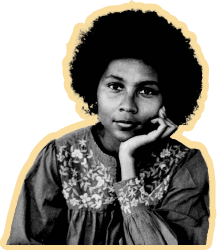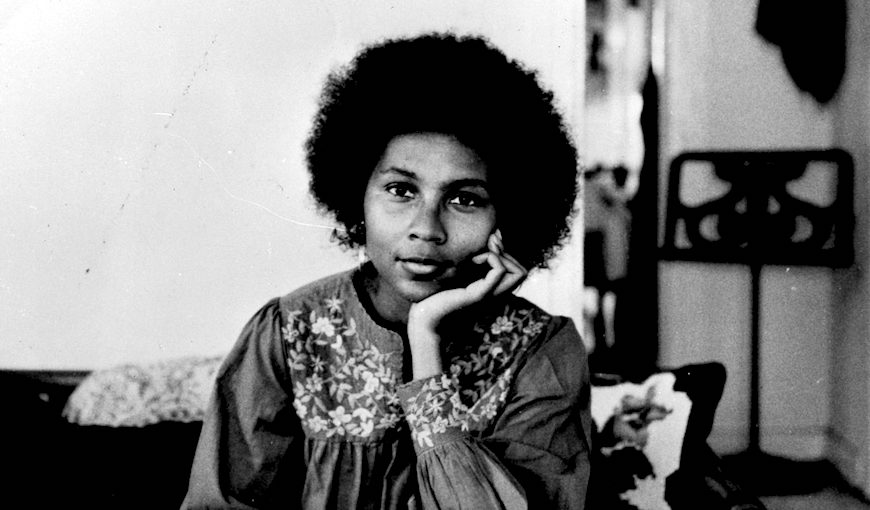Review by Heba Nimr
bell hooks died last month.

I first encountered her work in the1980s, through her book Feminist Theory from margin to center. “To be in the margin is to be part of the whole, but outside the main body” is the opening line of the book’s preface. The framing that followed fueled me at that moment and to this day. She was speaking to feminist theory and movements at that time, but I find the lessons I gleaned relevant to my work as a professional supporting people navigating conflict within their families or organizations. bell hooks:
- acknowledged the reality that those spaces are centered around privileged perspectives that “rarely include knowledge and awareness of the lives” of people who live on the margins;
- affirmed the wisdom of those on the margins who often see and understand our own circumstances as well as the realities of those at the center, often more than those at the center will ever understand marginal or even their own centered realities
- encouraged those of us at the margins to own our power and agency, care for and nurture our wisdom and orient / center ourselves around our own struggles and understandings, while paying attention to and learning from and with others marginally located…especially those who live at and recognize the intersections of various marginal and/or centered realities.
- encouraged those of us at the margins to own our power and agency, care for and nurture our wisdom and orient / center ourselves around our own struggles and understandings, while paying attention to and learning from and with others marginally located…especially those who live at and recognize the intersections of various marginal and/or centered realities.
That text and the labor of love and liberation of so many other Black feminists in the 1970s and 1980s was the context for Kimberle Crenshaw’s naming, in a 1989 legal forum, of intersectionality, which has now become a ubiquitous and often misconstrued concept.
Whether you are familiar with or new to bell hooks’ work and particular style, that was often both beloved and controversial, I encourage you to engage with some of the public reflections on her impact, or to return to her own writing or community dialogues. Below are some links to get you started. FYI, some may be behind paywalls, and/or advertisements, and some have many other embedded links that can take you down the internet rabbit holes.
If you only have time for brief reads, I found the obituaries, The Courage of bell hooks and The Life-Changing Curiosity of bell hooks, as well as the tributes at Yes, She Was a Powerful Woman! A Dedication to bell hooks and this reflection on hooks as a foundational figure moving and reminiscent.
Democracy Now! did an approximately 15 minute story featuring some video and audio excerpts of hooks in her own words, along with a lovely photo slideshow and interview with hooks’ longtime close friend, Beverly Guy Sheftall.
The New School at Eugene Lang College offers a YouTube playlist of hours of bell hooks’ talks, lectures and conversations at their campus. I draw particular attention to the public dialogue with Laverne Cox, an intergenerational conversation where the learning and impact goes in both directions, and where there is mutual admiration and respect alongside differing perspectives and opinions. For example, while hooks is clear about her distaste for the show in which Cox is part of the acting ensemble, Orange is the New Black, she specifically appreciates the way the show, via Cox’s storyline, represents Black people dealing honestly with conflict in their families. I further appreciate that in both this dialogue, and another public dialogue bell hooks has with her peer and longtime friend, john a. powell, Belonging Through Connection, we see hooks engaging in the inevitable messiness of ongoing learning – where she struggles a bit with naming and gendering trans experiences.
Watching or listening to these dialogues is an investment of time, ~1 – 2 hours each, but I do think that witnessing bell hooks’ learning curves, in community, is a profound part of understanding her life and her impact. The imperative of nourishing community as a form of living and loving justice was a central message of her teachings.
Finally, if you’re inclined to directly engage her written work, there’s a lot to choose from, including book and essay length texts, pop culture articles, children’s books, etc.—she was prolific. An outline of her work in book form, with reader reviews, is available at Goodreads and Tao Leigh Goffe has offered her perspective on nine essential bell hooks pieces to read, To Read bell hooks was to Love Her. Internet searches will direct you to other such lists, and further reflections and commentary.
bell hooks may no longer physically be with us, but her legacy continues. May she rest in peace and power.
